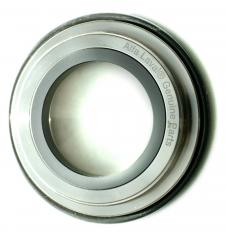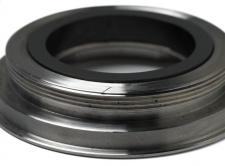

There are two basic designs of pump seals: the O-Ring (lip) seal and the mechanical seal. The primary purpose of both seals in the pump is to provide a barrier between the atmosphere and the casing of the pump. In the sanitary pump, the seal serves to keep leakages to a minimum and reduce any chance of contamination.
With mechanical shaft seal failure being the number one leading cause to pump downtime it is important to understand why this is occurring and what you can do to get the most out of your sanitary seals.
Pump failure or wearing out of the seal faces will cause leakage in the pump with the rate determined by factors such as roughness/flatness of seal faces’ surface, viscosity and type of media pumped, temperature and pressure in the pump, design and assembly of the seal, and stability and vibration of the pump.
Providing a good source of lubrication to the pumping system is extremely important to having a long sanitary seal life. Mechanical seals depend on lubrication to aid in the movement of the hard seal materials. Dry-running the pump is the most common reason a lack of proper lubrication can occur. Also, very high pressure or fluid’s vapor pressure reduces the lubrication effect of the fluid.
Fixing It: The easiest way to deal with such challenges is by using a flush on the mechanical seal. Using a compatible flush fluid significantly improves the seal life.
Large pressure, temperature and velocity variations are a major factor that leads to sedimentation of the product between the seal faces or at the sealing gaps. Accumulation of sediments on the faces opens the gaps further resulting in leaking of the seal. This leaking most often increases with time. If abrasive particles accumulate, seal damage can also occur, worsening the situation.
Fixing It: The recommendation for the abrasive applications is to use seal faces that are exceptionally hard. Also, using a mechanical seal with a flush is a major fix for this. The fluid used in the flush helps in lubricating the faces whilst keeping them clean.
Damage during seal removal or improper cleaning of the seal are the two major causes of operator error. Carbon, which is one of the commonly used materials in seals, is so brittle that chipping of the seal faces could result from minor mishandling. Improper cleaning of the pump could lead to a major seal problem when solidification of the product makes the faces “lock” together.
Fixing It: The obvious fix for this is proper handling and cleaning of the pump. If you are unsure of how to do contact an expert.
This results from the type of product being pumped.
Fixing It: Abrasive products should be pumped with compatible materials in the seals.
Excessive vibration leads to chips on the carbon faces and opening of the seal face.
Fixing It: Correct warped or bent shafts, loose or worn bearings and rotating components which are not balanced.

Failure in mechanical seals can result from a combination of factors. It’s important to conduct regular inspection and take care of the details to avoid premature failure of the seals.
Rodem carries a variety of seals that are all manufactured strictly for use in the sanitary industry, with high-quality, compliant materials, and are available in a variety of materials and sizes. If you need help figuring out the size or type of seal you need, call a Rodem rep today. We can help determine the specific item you require.
